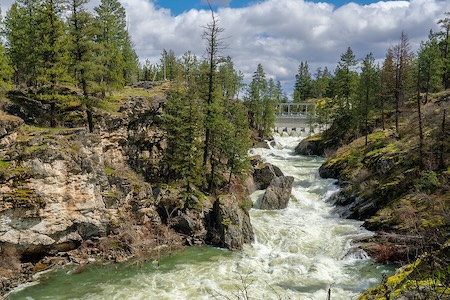The overarching goal of this research is to better understand how Total Maximum Daily Loads (TMDLs) across the Columbia River Basin are being created and implemented when considering distributive and procedural characteristics, such as population demographics, jurisdictional boundaries, power and collaboration, community engagement, and Indigenous sovereignty.

Photo by Stan Petersen
Charter Summary:
More than half a century since the Clean Water Act was passed, over 50% of U.S rivers and lakes are still considered too polluted to meet water quality standards for fishing, swimming, and recreating. Compounding upon the extensive and insidious problem that is water pollution in the United States, marginalized communities are at greatest risk of having hazardous waste sites and industrial facilities in their neighborhoods. These sites often impact surface and ground water quality, creating severe consequences for both human and environmental health.
The Clean Water Act (CWA) was passed in 1972 to address growing concern over surface water pollution. While the Clean Water Act did much to address point source pollution through the use of permitting and regulation of known polluters, little regulation exists today to control nonpoint source pollution from sources such as agriculture and urban runoff. One of the primary tools for addressing both point source and nonpoint source pollution through the CWA is known as a Total Maximum Daily Load (TMDL). TMDLs are mandated under section 303(d) of the CWA and require states to monitor and report impaired waterbodies, with high priority waterbodies having a TMDL created to improve water quality.
This research aims to explore how U.S water quality policy through the Clean Water Act, particularly Total Maximum Daily Loads (TMDLs), are created, implemented, and spatially distributed across the four primary U.S states of the Columbia River Basin. The Columbia River Basin is one of the largest river basins in the United States, covering over 1,200 miles from British Columbia to the Pacific Ocean and provides critical ecosystem services to millions of people. This work focuses on distributive characteristics of TMDLs, such as population demographics and environmental hazards, and procedural characteristics such as decision-making power, community engagement, and Indigenous sovereignty. This research is essential to understanding water quality management in the United States and how TMDLs can be created and implemented to improve environmental health, and respect Tribal sovereignty while addressing pressing water quality problems.
Team Members
- Alexander Fremier (WSU)
- Dylan Bugden (WSU)